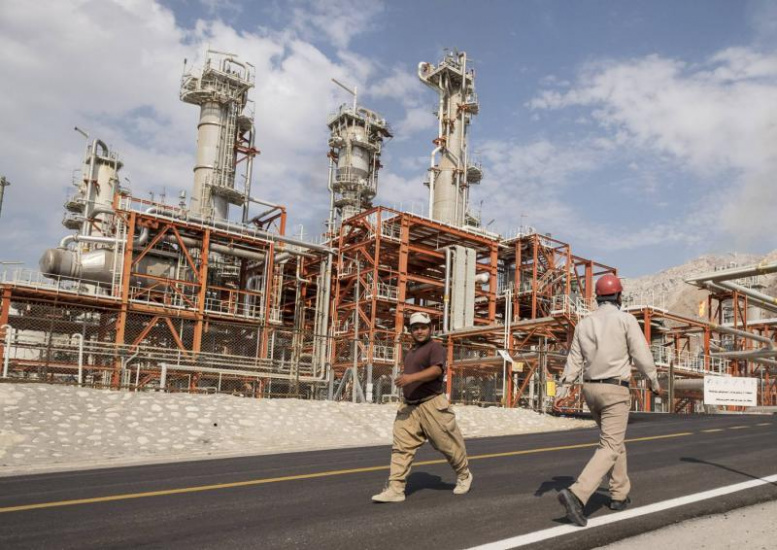How to Invest Oil Windfall Profits: A quick guide for Iranian authorities

Surging oil prices are the bee’s knees for oil exporters. Oil price hike increases revenue during a very short period for select countries, providing an incredible opportunity to invest or improve the currency flow domestically.
Iran’s oil revenue during Ahmadinejad’s presidency (2005-2013) reached more than $800 billion USD, a record for the country in 100 years. Ahmadinejad’s revenue from oil export was four times more than his predecessor and double his successor. Statistics show almost half of the post-revolution oil revenue earned in those eight golden years. Oil prices hit $143 USD/BBL at their height, and for a six-month period stood above $100 USD/BBL.
The same goes for other oil exporters such as Saudi Arabia, Qatar, the UAE and Russia. However, actions taken with this massive revenue were different. Ahmadinejad's decision was to import more than $700 billion USD of goods, that is, he spent whatever Iran earned from oil exports. The upshot was a six-fold liquidity by the end of his presidency. Sadly, the windfall did not produce any significant fundamental changes in Iran’s industry nor did it leave a footprint in global capital flow.
However, Arab states of the Persian Gulf region have looked for a wiser solution, to stop a return to their pre-oil discovery era. Their solution includes mostly investment funds which help the oil profit flow to global markets.
The Public investment Fund (PIF) of the Kingdom of Saudi Arabia has had a flattering amount of investment in recent years. PIF has successfully obtained POSCO in South Korea, 5% share of Uber and 5% of CAPCOM -a Japanese video game company, while investing $45 million USD in technology together with Softbank. Additionally, it has invested £300 million pounds on Newcastle football club, enough to make Alan Shearer wave the KSA flag.
Abu Dhabi Investment Authority and Investment Corporation of Dubai have expanded investments globally, sponsoring the likes of Manchester City in England, Melbourne City of Australia, New York City of the USA, Mumbai City FC of India, Girona FC of Spain, Yokohama of Japan and few others in five continents.
Qatar Investment Authority is a cut above the rest, owning 15% of Volkswagen’s share, 3% of Royal Dutch Shell, 6.5% of Barclays Bank, 5% of Credit Suisse, 70% of Paris Saint-Germain, 8.5 % of Glencore and Malaga of Spain. It is worth noting that Qatar’s $220 billion USD investment in FIFA World Cup 2022 is the biggest for any athletic event, in comparison to the $3.5 billion USD investment by South Africa in 2010.
These types of investments will come to fruition for Persian Gulf countries to lead global capital flow as well as maintaining a variety of profits. For example, Manchester City FC was purchased in 2008 for $212 million USD. New owners spent an additional $2 billion USD on the club and gave it a few years to grow. The result: the club's value has more than doubled within 10 years.
But the flow of money directed toward football clubs is not only pitch-oriented. Supporters watch matches from Al-Jazeera TV channels at home, while others fly Qatar Airways directly to Doha to support their national team in World Cup 2022. No wonder that among all candidates of powerful football federations in Asia, Mohammad Bin Hammam of Qatar was chosen as president of the Asian Football Confederation in 2002 and paid off FIFA to bring a World Cup home twenty years later. Personally, I believe Qataris deserve to give a global lecture on macro-investment.
Iran, on the other hand, saves its revenues in the National Development Fund of Iran (NDFI) with limited domestic impact, and no significant role in the global market. Moreover, NDFI has acted like an ATM for Iranian governments facing an empty balance in some recent years.
As an indirect effect of the Russian invasion of Ukraine, oil prices have risen again and another windfall is in sight. The question is, will and can Iran take advantage of this situation?
Oil price hike may once again shift global investment toward renewable energy. China, the US and Europe have already increased investment in renewable energy to secure resource independence in the coming decades. This shift will eventually result in Iran and other oil exporters losing their advantage in the near future. The key point is here: with a change of consumption model in major oil consumers, this might be the last price hike oil exporters will see.
Iran, in comparison to other Persian Gulf states, holds a remarkably larger population which means oil profits are distributed among a larger number of people and the leftover to invest is not much. While Iran’s economy has been battered by US (and European) sanctions (mostly in recent years due to the Trump administration’s maximum pressure policy), Iran still has a durable demand from China. Iran and China have signed a 25-year plan which gives Iran an opportunity to invest oil profit directly in Chinese fundamental industries. China has recently introduced a 5-year plan of “dual circulation” that welcomes investors in fields like renewable energy, microprocessor, automotive, airplanes and even refineries that turn oil to dolls on spot, something Iran doesn’t have and can’t obtain easily.
It boils down to Iran's economic and financial strategies to take advantage of the recent oil windfall. Whatever its details, the plan has to be able to withstand the US sanctions and ratchet up profit for 80 million Iranians.
* Hossein Ardestani is Adviser to the General Directorate of Economic and Business Studies in Ministry of Economic Affairs of Iran.

